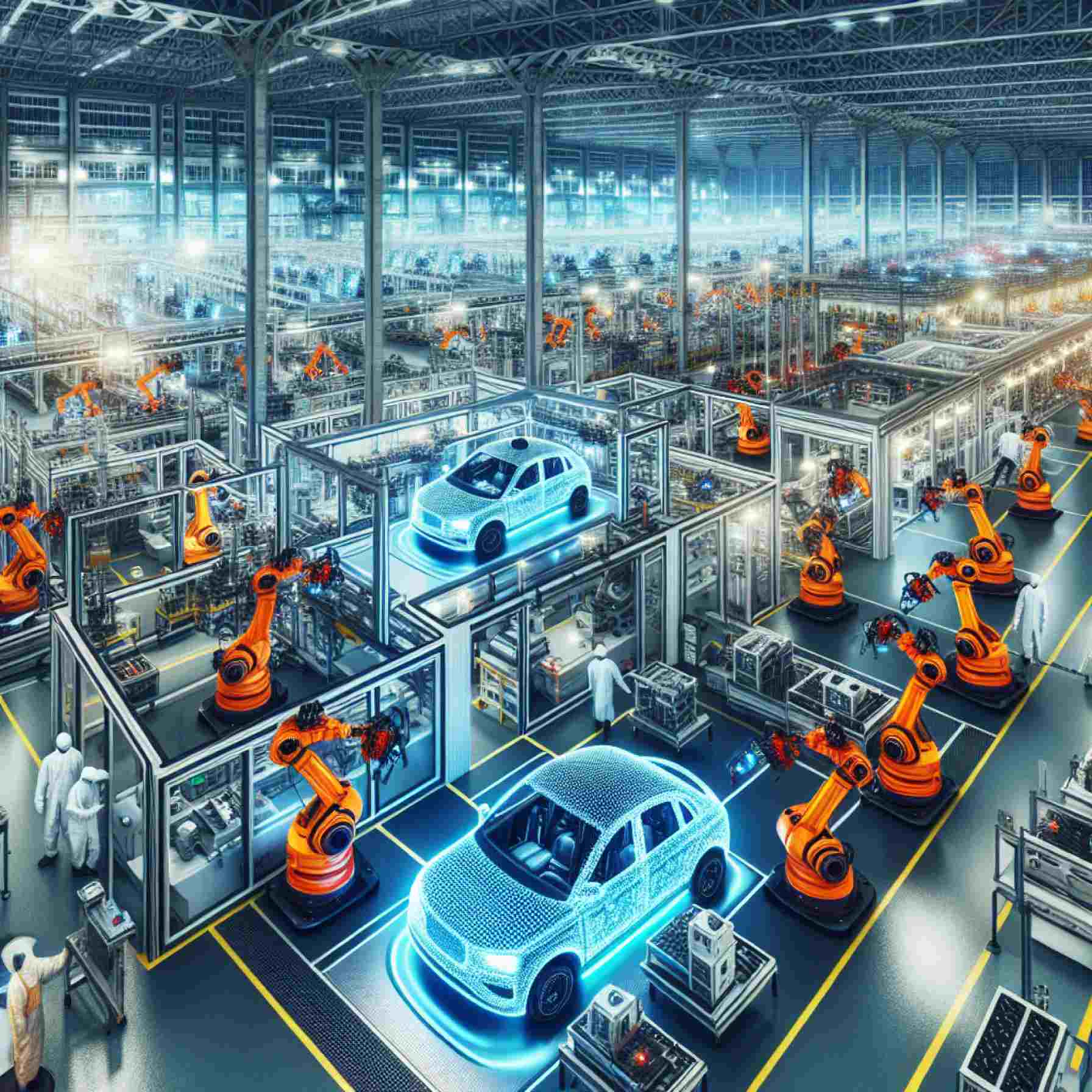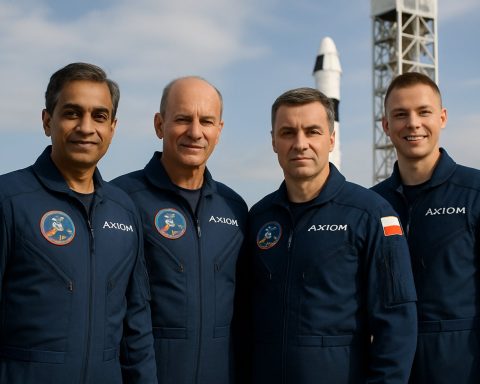- Waymo and Magna International are developing an autonomous vehicle hub in Mesa, Arizona, aiming to produce over 2,000 Jaguar I-PACE robotaxis by 2026.
- The “Waymo Driver Integration Plant,” spanning 239,000 square feet, will expand its capacity to potentially manufacture tens of thousands of autonomous vehicles annually.
- Waymo’s ongoing expansion includes operations in Austin, Los Angeles, and the San Francisco Bay Area, with future plans for Atlanta, Miami, and Washington, D.C., resulting in 250,000 weekly paid rides.
- The competitive landscape includes Tesla, which contrasts its camera-based navigation with Waymo’s sensor suite of radar, lidar, and sonar.
- Waymo is exploring personal ownership of autonomous vehicles and is in discussions with major car manufacturers like Toyota.
- Waymo seeks to double its U.S. fleet, leading the charge into a driverless future while transforming urban mobility.
On the dusty outskirts of Phoenix, a technological revolution is quietly taking shape. Nestled in Mesa, Arizona, Waymo and automotive titan Magna International are gearing up to transform the landscape of autonomous vehicles with their ambitious plans. By 2026, this burgeoning hub will churn out more than 2,000 sleek Jaguar I-PACE robotaxis, propelled by the visionary thrust of the “6th-generation Waymo Driver.” Vision meets manufacturing in this state-of-the-art 239,000 square foot behemoth known as the “Waymo Driver Integration Plant.”
Currently housing a fleet of approximately 1,500 vehicles, Waymo’s bold strategy aims to shake the very foundations of personal and public transportation. As the clock ticks, the facility will expand its capacity, potentially crafting tens of thousands of fully autonomous vehicles annually. Yet, the narrative is not solely about numbers—it’s a story of innovation unfurling with each mile covered by these driverless escapades.
Since its initial foray into the commercial robotaxi market in Phoenix in 2020, Waymo has cast its net wider, capturing the bustling streets of Austin, Los Angeles, and the San Francisco Bay Area. An impressive 250,000 paid rides per week are currently advancing without human intervention, and new horizons beckon with planned expansions to Atlanta, Miami, and Washington, D.C., by 2026.
In an industry ripe with rivalry, Tesla’s plan to launch a robotaxi service using Model Y SUVs echoes the competitive symphonies playing out in tech spheres. While Tesla champions its camera-centric approach, Waymo’s vehicles glide on a concert of radar, lidar, and sonar, elevating the craft of autonomous navigation to symphonic precision.
As CEO Sundar Pichai acknowledges the unpaved path ahead for Waymo’s business model, a tantalizing prospect hovers in the air: personal ownership of these cutting-edge chariots, driven not by horsepower, but by the sheer power of autonomous innovation. With discussions underway with automotive giants like Toyota, Waymo teases a glimpse into a future where the technology not only transports but transforms the very essence of urban mobility.
The broad takeaway? As Waymo accelerates towards doubling its U.S. fleet, we are drawn ever closer to a world where the wheels of progress lead us into uncharted, driverless territories. In an era where every ride tells a story, Waymo is not just taking passengers—it’s taking leaps into the future.
Discover How Waymo’s Autonomous Revolution Transforms Urban Mobility
Introduction
On the outskirts of Phoenix, Arizona, a revolution in transportation is underway with Waymo’s ambitious plan to establish a hub for autonomous vehicles. By 2026, in partnership with Magna International, the “Waymo Driver Integration Plant” in Mesa will produce over 2,000 Jaguar I-PACE robotaxis annually. This marks a significant step in Waymo’s strategy to transform both personal and public transportation across the United States.
Features and Technology
Waymo’s driverless vehicles are distinguished by their use of a multi-layered technology suite, including radar, lidar, and sonar, which work in harmony to navigate roads with precision. This differs from Tesla’s camera-centric autonomous model, showcasing Waymo’s commitment to leveraging diverse sensory inputs to enhance safety and reliability.
Market Outlook and Industry Trends
The autonomous vehicle industry is on the brink of rapid expansion. Waymo already provides approximately 250,000 paid rides per week across cities like Phoenix, Austin, Los Angeles, and San Francisco. The company plans to extend operations to Atlanta, Miami, and Washington, D.C., suggesting a robust growth trajectory. According to a report by Allied Market Research, the autonomous vehicle market is expected to grow from $54.23 billion in 2019 to $556.67 billion by 2026, highlighting the sector’s explosive potential.
Real-World Use Cases
Waymo’s robotaxis aim to revolutionize daily commuting, promising cost-effective, safe, and convenient transportation. The extensive deployment of these vehicles can significantly reduce traffic congestion and lower urban emissions, contributing to sustainable city living.
Pros and Cons
Pros:
– Safety: Multi-sensory technology enhances road safety.
– Convenience: Reduced need for human intervention in driving.
– Environmental Impact: Electric robotaxis contribute to lowering emissions.
Cons:
– Cost: High initial investment in technology and infrastructure.
– Regulatory Challenges: Navigating varied state and federal regulations.
– Public Perception: Trust in fully autonomous vehicles remains a hurdle.
Controversies and Limitations
Despite its promise, the autonomous vehicle industry faces significant challenges. Regulatory approvals, public trust, and ethical concerns around job displacement for drivers are pressing issues that Waymo and its competitors must address. The ongoing debate around data privacy and cybersecurity also raises questions about the protective measures these vehicles employ.
Waymo’s Vision for the Future
The potential for personal ownership of Waymo vehicles hints at a transformative shift in urban mobility. While discussions with automakers like Toyota are ongoing, such moves could expand beyond public transport, offering a new frontier in personal commutes driven by autonomous innovation.
Actionable Recommendations
– Stay Informed: Follow developments in autonomous technology to understand its implications.
– Evaluate Safety: When considering use or investment, prioritize technologies with comprehensive safety systems.
– Urban Planning: Cities should start adapting infrastructure to support autonomous vehicles.
Conclusion
Waymo’s Mesa project marks a milestone in the evolution of autonomous vehicle technology. As the company progresses toward doubling its U.S. fleet, this bold endeavor invites us to envision a future where driverless transportation becomes the norm. For more information on Waymo’s projects and innovations, visit their official site Waymo.
By embracing advanced technology and forging strategic industry partnerships, Waymo is not only transforming transportation; it’s paving the road toward a more autonomous future.







